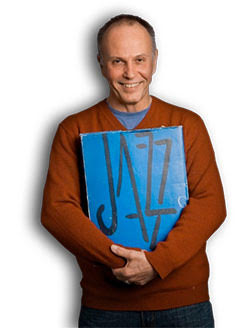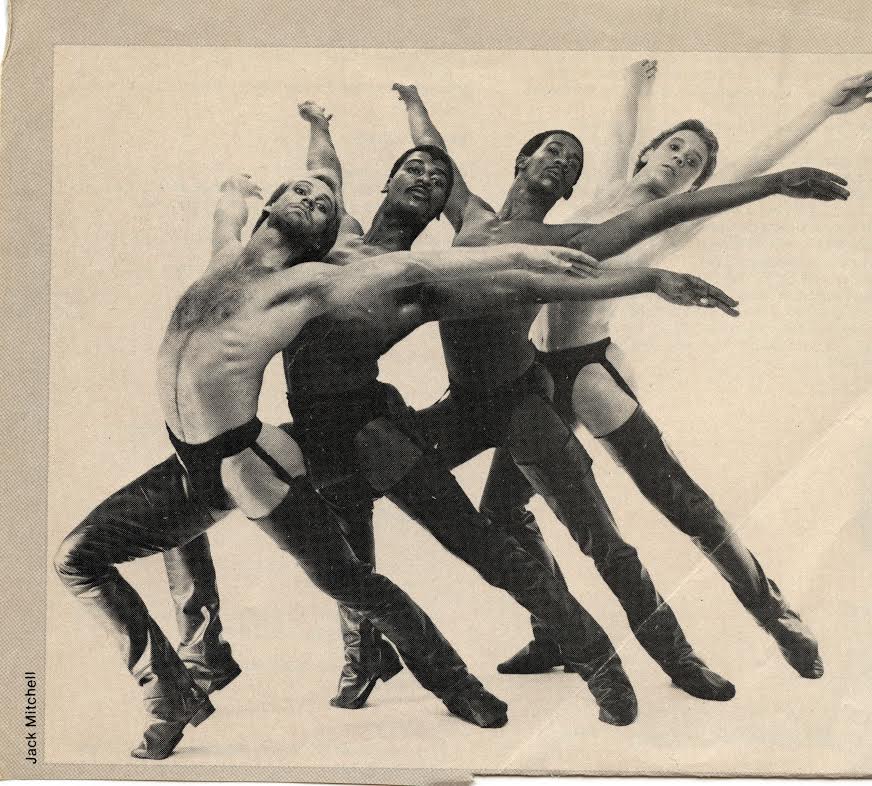Lost Voices Found
Linda Shapiro on the upcoming concert paying homage to the promising Minnesota jazz dance choreographers lost in the 1980s to AIDS.

Lost Voices in Jazz: The Choreographers of the Minnesota Jazz Dance Company concert coming soon to the O’Shaughnessy promises to deliver a syncopated blast from the past. During the 1980s, MJDC founder and jazz dance pioneer Zoe Sealy commissioned five young male choreographers to create works for her company. MJDC ceased operations in 1988. By 1991, four of those five men had succumbed to AIDS.
“If these voices had not been lost, concert jazz dance would have been a much richer place,” said Karla Grotting, a former MJDC dancer and head of the Lost Voices in Jazz project. “There would be a greater variety of jazz techniques, styles, dancers and companies, and a range of works as diverse as jazz music itself—a wild jungle of art instead of a small stand of trees.”
That small but hearty stand of trees includes the fifth choreographer, Danny Buraczeski, who founded his own immensely influential company JAZZDANCE here in 1992. Buraczeski left for a job in Dallas in 2005, but he’ll be back to perform a solo in the concert.

Grotting began the project to reconstruct select dances by William Harren, Jeffrey Mildenstein, Clarence Teeters Jr., and David Voss, and to recognize their impact on the development of American concert jazz dance. She teamed up with Karis Sloss’s Eclectic Edge Ensemble, a jazz dance company based in the Twin Cities, and several guest artists to remount the works.
What began as a plan to produce a concert expanded to include a Facebook page, an archive, a video project, and a partnership with Open Arms MN and The Aliveness Project to improve HIV/AIDS awareness, education, and outreach.

Jazz dance, like jazz music, has always been a vibrantly eclectic art form. Rooted in the polyrhythms and isolations of African dance passed down through African American vernacular dances like ragtime and swing, jazz dance evolved from a popular to a theatrical dance form after World War II. From the late 1940s into the 1980s, choreographers like Jack Cole, Bob Fosse, and Jerome Robbins drew from a variety of sources, including African American dance, ballet, modern dance, even classical Indian dance. (Cole, in particular, used the isolations and complex rhythmic sensibility of the South Indian dance form Bharatanatyam, as exemplified in the 1955 film Kismet.)
Like Cole, Bob Fosse danced in nightclubs and choreographed for musicals and films. His signature hunkered-down, explosive style borrowed from vaudeville, ballroom dance, even cancan and gypsy dances. Coming from the classical ballet world, Robbins wanted to bring an authentic American voice to a European art form by melding jazz, popular, and classical styles. His choreography for musicals fleshed out characters and used dance to tell the story: In West Side Story both the attempted rape of Anita and the deadly rumble are rendered as turbulent dance numbers.
For Erinn Liebhard, one of the performers in Lost Voices, the hallmark of jazz dance is the intersection of various kinds of dance to interpret the complexities of jazz music. But that is not to say that jazz dance is a mish-mash of styles. Both Grotting and Sealy insist that the form has a unique kind of specificity. Sealy was greatly influenced by several jazz artists in the 1960s and 70s, including Luigi, Matt Mattox, and especially Gus Giordano, who had a company and school in Chicago. Specifically, Sealy admired the clarity of his style, the precision, and the demanding technique that built strong dancers who, she says, could do anything. Conversely, Sealy thinks that jazz dance training has been diluted by the cross-training that many dancers today prefer. They study various forms of dance (ballet, modern), then add other types of bodywork like yoga and Pilates, even weight training. “Today’s dancers are strong and technically well trained, but that’s not enough. They need specific knowledge of various jazz styles,” says Sealy.

Grotting also believes that something has been lost in terms of stylistic nuance, dynamics, pure physicality. “The style had a simplicity and directness that is difficult for dancers today. But it also had complex articulations and isolations. My students think that just moving their hips in a circle is enough” she laughs, demonstrating a litany of complex manipulations that demonstrate what the properly trained jazz pelvis can accomplish.
Sloss has watched her Eclectic Edge Ensemble dancers try to master the intricacies of these dances. Both she and Liebhard describe them as less grounded, much more “pulled up” than they are used to. Clarence Teeter’s dance, The Nutleys of Nubec Stop at Edith’s on the Way to Spain, in particular demands quick, complex footwork in shoes with heels for dancers who are used to releasing their weight down into the floor.
Grotting emphasizes the diversity of the works on this program, with music ranging from classic jazz to avant-garde and new age music of the 1970s and 80s. William Harren’s As You Desire Me from 1984 combines elements of ballet, modern dance, and pedestrian movement. Its witty architecture manifests complex spatial patterning while maintaining a sassy, tongue-in-cheek attitude. Between phrases of fast-paced footwork, the dancers preen and pose, taking on various personas in what Grotting describes as “a dance about being seen and trying to be what someone else wants us to be.”
Sealy’s contribution to the program was choreographed for Eclectic Edge Ensemble after her husband, Bill, died and embodies her relationship to him. They met in a ballroom dance class that she was teaching. Poignant and lyrical, Sealy’s dance unites the sweeping grandeur of ballroom dance with an underlying anxiety of loss.
Grotting did a lot of sleuthing to find often fragile or damaged tapes of the dances and music. She got former MJDC dancers to come into rehearsals and help with the reconstructions. In the process, she found information about a number of MJDC dancers whom she knew had contracted AIDS or were HIV positive. She found Dennis Kelly, for instance, on YouTube doing a fundraiser for a Chicago health center that deals with AIDS. She interviewed friends, families, and colleagues of the choreographers, including David Voss’s doctor, one of the earliest physicians specializing in work with AIDS patients.
Grotting also started a Facebook page, Lost Voices in Jazz: Choreographers of the Minnesota Jazz Dance Company, which documents the process daily. She formed a partnership with filmmakers Caitlin Hammel and Michele Blanchard of Perimeter Productions to help tell the story through interviews, rehearsal and vintage footage, and a larger documentary to come. The fruits of her research will eventually be housed in the University of Minnesota Performing Arts Archive.
While fundraising efforts are still underway, for Grotting the project has been a labor of love to which she and others have committed personal resources. “I think there has been a social amnesia about AIDS,” says Grotting. “Young people today don’t realize how devastating it was.”
On a personal note, Grotting, who is not performing in the concert, talks about the pleasures of reconstruction: “Something about putting those dances back in my body made me understand my connection to them on so many levels. This project is all about giving this work to the next generation of dancers.”
Performance details:
Lost Voices in Jazz: The Choreographers of the Minnesota Jazz Dance Company will be on stage Friday, July 24 at 7:30 pm and Saturday, July 25 at 7:30 pm at the O’Shaughnessy, St Catherine University in St. Paul. For tickets and more information: http://oshag.stkate.edu/event/lost-voices
Linda Shapiro writes about dance and performance. She was the co-founder and co-artistic director of New Dance Ensemble, a repertory company, from 1981-94.